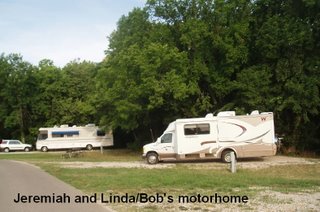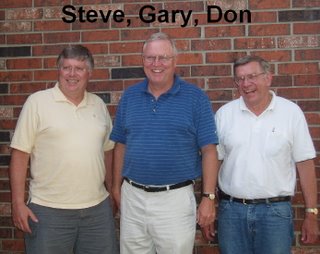Ahh! Glorious Rain!
Stop wanting a better life and enjoy the life you have. -- Adrian Rogers
Happiness doesn't depend on what we have, but it does depend on how we feel toward what we have. We can be happy with little and miserable with much.
-- William Dempster Hoard
I’ve been thinking about happiness, and have the above pithy thoughts to share. So, where are you on the “happiness” scale? It is great at the top!
July 3
After so many months with no rain, it is a glorious sight! It rained several late afternoons/early evenings while I was at Sugarite State Park (New Mexico), and as I drove north on I-25 into Colorado the morning of July 3, I could see storm clouds forming. By the time I was on the outskirts of Colorado Springs, rain was coming down.
My sister Linda and her husband Bob were already at Falcon Meadow RV Campground (several miles east of Colorado Springs on Highway 24). This is an enjoyable family-owned and operated RV park in the eastern plains-area of Colorado. Wildlife of note includes gophers, rabbits, pronghorn, meadowlarks, falcons – and the requisite ants and mosquitoes. I had a great view of Pikes Peak from my campsite.
This famous 14,110-foot peak was named after Zebulon Pike – who never climbed it. During the early 1800s, Pike explored this area and called the peak the Grand Peak. This year Colorado is celebrating the Pikes Peak Bicentennial.
In 1873 the U.S. Army Signal Corps built a weather station on Pikes Peak summit and a carriage road was built that made mule-back and mule-drawn wagon trips possible. In 1891 the cog railway to the top was built – the same cog railway that runs today. A road that was suitable for automobiles was first used in 1915, and became a toll road ($2) for the next 20 years.
Another Pikes Peak historical fact is that the words to “America the Beautiful” were written by Katharine Lee Bates as she ascended the peak in 1893.
July 4 - What a great way to celebrate Independence Day than to be an the U. S. Air Force Academy!
Before heading east the next morning, Linda, Bob and I toured the nearby Air Force Academy. The Visitor Center was informative, but my favorite building is the Cadet Chapel. Can you believe I forgot to take my camera? You can check it out on the Academy website.
This unique chapel building took five years of planning and four years of construction; completed in 1963. Within this one structure is a Protestant Chapel seating 1,200 persons and a 120-seat choir loft, a Catholic Chapel seating 500 with an 80-seat choir loft, and a Jewish Chapel seating 100. An All Faiths Room is provided for use of other religious faith groups.
I was especially pleased with the statement made in the Chapel brochure:
“The Cadet Chapel is the centerpiece of our Academy. As such, it plays a vital role in developing and nurturing the spiritual lives of our cadets. It is a reminder that we are a nation under God dedicated to the promotion of peace and goodwill among all nations of the world. The young men and women who come and study here do so in order to prepare themselves to protect freedom – freedom which is God’s gift to all people.”
After about 80 miles on Highway 24, we crossed the border into Kansas: known as both The Sunflower State and The Wheat State. The stop for the night was at the High Plains RV Park near Oakley.
I find driving through Kansas delightful, even on the Interstate! It is primarily an agricultural state, growing 10 million acres of wheat, 170,000 acres sunflowers, 3 million acres of corn, 2.8 million acres of soybeans and 3.2 million acres of sorghum. Cattle are big business also. I don’t know who counted, but I read that there is 6.65 million head of cattle and calves. I did miss going through small towns, though.
Of course there is a lot of interesting Kansas trivia, but one that amused me was finding out the two pronunciations for the “Arkansas” River. In Kansas it is pronounced “Ahr-KAN-zuhs” but in the states of Colorado and Arkansas, it is the “ARK-an-saw” River.
July 5
On July 5, we drove to Clinton Lake State Park just outside Lawrence, Kansas. This is a huge park – 240 water/electrical hookup sites plus 220 primitive sites on 1,425 acres. This was “home” for two nights.
The lake was created by a Corps of Engineers flood control dam. Wildlife includes mourning dove, quail, turkey, squirrel, deer and raccoon. Reportedly there is good fishing – crappie, walleye, white bass, channel catfish, largemouth and smallmouth bass and blue gill – but our family visiting schedule was more important than spending time in the park or at the lake.

The evening we arrived at Clinton, we met Cousin Janet, her husband, their son and his family for dinner in Lawrence.
The next morning, July 6, Linda and I drove into Lenexa (near Kansas City) to visit Aunt Maxine and her three sons: Nebraska cousins Don and Gary, Kansas cousin Steve and their wives.



<< Home